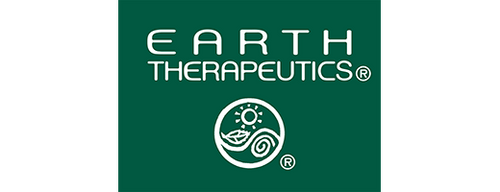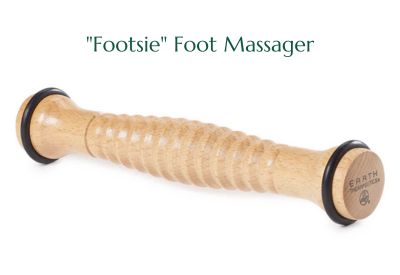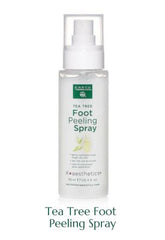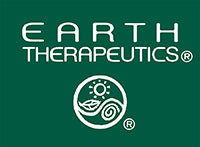Ballet is pure poetry in motion. Effortless grace made manifest through grueling physical discipline and an unwavering dedication to the craft. As any professional dancer will tell you, the physical demands of dance take an immense toll, with the feet bearing the brunt of the impact and strain from countless hours of classes, rehearsals, and performances.
We sat down with Lauren Barette, a seasoned dancer who has performed on stages from Los Angeles to New York City, to get insights into her foot care regimen. Having started dance at just 5 years old and trained rigorously at top schools like Los Angeles Ballet Academy and Joffrey Ballet, Barrett has firsthand experience with the preventative measures and recovery routines necessary to maintain foot health and longevity in this demanding profession.
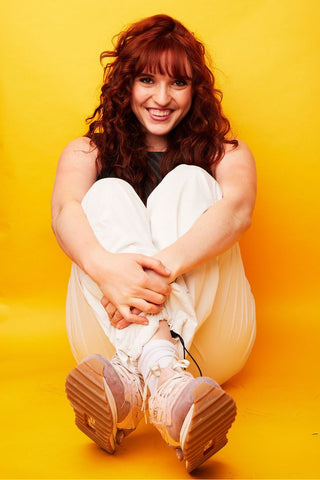
Angela Williams: Lauren, thank you for taking the time to chat with us today! Could you give us a little background on when your passion for dance took hold, how your career got started?
Lauren Barette: I originally started dancing when I was 5 years old and just kept at it. I got more serious about dance in high school when I attended the rigorous Los Angeles Ballet Academy, where I was dancing over 40 hours per week.
After high school, I went to UCLA as a dance major. Then after graduating in 2021, I moved to New York City to become a trainee at the prestigious Joffrey Ballet School. Since finishing up my time at Joffrey, I've been freelancing in the dance industry. I've danced off Broadway and choreographed for off Broadway. I just closed the show, Footloose, in Los Angeles, and I've been in a couple of music videos. I train and take classes every day.
AW: With the incredible physical demands of your dancing career, I'm sure you've dealt with your share of foot problems over the years. What are some of the most frequent foot issues you deal with?
LB: That's a great question. With ballet, I've been getting back into pointe work, in toe shoes. That alone causes problems for feet – you get a lot of blisters, calluses and stuff like that. And with blisters, once they open up, you're done. Also in general, there's always a lot of tightness and stiffness through the arch of your feet if you overuse your calf muscles. I've struggled with this, when my calves are tight, then that pain shoots into the arch. You definitely need to massage that out. Those are the two biggest problems I experience.
AW: Can you describe your daily care routine?
LB: If I ever see a blister forming, I will do whatever I can to avoid that opening up or getting worse. And then I massage the arch of my feet with a lotion and lacrosse balls – that's what a lot of dancers use to roll out your feet or your calves because they’re really stiff. I just started using the Footsie Roller, the massage tool. It’s perfect. I always massage as much as possible.
If my ankles ever feel weak or if I somehow sprained an ankle – wrapping up your feet is important. There were a couple of people in the last show I was in who hit their leg on the set or got a minor ankle twist. Wrapping bandages normally allows you to keep performing. But you’ve definitely gotta be careful if you're injured.
For me, it's mostly injury prevention and foot and leg massages.
AW: You mentioned the Footsie Roller. I wrote a piece on plantar fasciitis and in my research, I realized that I had it, that that was what was causing my foot pain. After a couple of months of using the roller, the condition went away. So yeah, definitely down with the Footsie massage.
LB: I didn't even know Earth Therapeutics had something like it until recently. I was like, “Oh my God, this is something I would 100% use all the time!” My problem was so bad, I got chiropractic laser at one point because I had tendinitis that shot down through the arch and created plantar fasciitis and inflammation.
AW: It’s so painful – like walking on razors. Aside from the Footsie Roller, are there any other kinds of products that you always keep handy?
LB: I don’t know what it’s officially called, but the stretchy bandages. They’re good for wrapping when you twist your ankle. Also, I keep two lacrosse balls in a sock and use them to roll out my calves all the way down to my feet. It's a really good massage.
There's these things called toe spacers that I should be wearing more often. In ballet, it’s like a plastic rubber thing worn inside the pointe shoe that’s used to separate the big toe from the second toe. I have big bunions that I've developed from dance. To prevent them from getting worse, because it really hurts when I do pointe work, I need to use those more consistently.
AW: I think it goes without saying that I love ballet. I love watching the dancers, the drama, the effortless grace. But I’m sure I have no concept of actual physicality. Any myth busting that you want to tackle in terms of dancing on pointe or people's expectations versus reality – from your personal perspective.
LB: That's an interesting question. I think a lot of people, when you're younger, imagine dancing on your toes–it’s like a magical illusion. But it's really because it's flat at the top of the box (of the pointe shoe). Because you have the toe pads and stuff like that, it's not as painful – or as impossible – as you'd think. It means that you need years of training and strong ankles and whatnot still to do it. But it's not like you're dancing on your big toe.
A lot of these ballerinas look so graceful, and they make it look so easy, but it's actually the most difficult thing that anyone could do, dance-wise, I suppose. Are there any myths that you hear a lot?
AW: I've seen all the videos of the ballerinas tearing their shoes apart, you know, the first time they wear them, hammering them, setting them on fire a little bit. Once they’re all done up on the foot, they look beautiful but pretty rigid, pretty stiff. Are they as inflexible as they look?
LB: No, you actually need a lot of flexibility. That's the number one thing you learn when you start ballet - rolling through your feet. Imagine your feet flat on the floor. Then focus on keeping the toes or the balls of your feet on the floor and then your heels and then stretching through your metatarsal up through the toes all the way to the top. And then you roll back down. All of that in a fluid motion, in these shoes, makes it hard.
People break the shoes in so much so they can have more flexibility in their feet. But there’s such a fine line between flexibility and shoes that are dead, miserable and don’t support you at all.

AW: Can you speak a little bit about how you specifically prepare for a performance before and maybe your cool down routine? Do you massage out your feet, legs, etc?
LB: For Footloose, the thing that made it hard on my feet was that I was dancing in sneakers for the whole show, except the final number which was in heels. But for the majority of the time, I was in these heavy-soled sneakers which are not dance shoes. That was the closest I got to injury.
Before I would get into the theater, I'd do a full body warm up with lots of stretches, especially calves and legs, to really loosen up. And then our opening number had a lot of cardio which helped get me fully warmed up.
During the show, whenever my feet started hurting from those sneakers, I would just be really careful, try not to move around more than absolutely necessary. A lot of foot pain can be prevented by just not doing any extra, unnecessary movements on top of what's required. I'd take it easy, keep warming up, or sometimes just sit when I could.
After the show, I'll admit I wasn't great at taking care of my feet. But I would immediately change out of those sneakers into regular, comfy sneakers to wear home because anytime I could wear something more supportive, I did. I'd put on socks, too. Sometimes when I got home I'd massage my feet and body or do extra stretches, especially for my calves and arches which were always really tight.
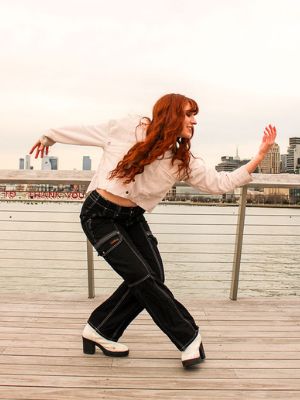
When I was in high school doing ballet, I would do an ice bath after every class at night. I'd fill up a tub with ice water and sit in it for 20 minutes. It was pretty cold, but it was definitely necessary because I had such bad inflammation all the time. That was the only thing that helped.
AW: Do you ever do any warm foot soaks for relief or to care for your calluses? Dancers need calluses, so I understand, or is that another myth?
LB: It's funny because I've been using the Foot Peeling Spray which is really good, but then I get scared about removing my calluses. I have scars on my feet from really bad blisters that have closed up from pointe work. Once you get a blister and then it closes up, it grows thicker skin, so it just avoids getting blisters again. That's the big reason why calluses are good for dancers.
AW: You mentioned massages being a big part of your self-care routine. Do you have a DIY foot-to-calf massage that you do regularly? Can you share it?
LB: Yes, that's a big thing. Dancers are really good at self care, doing it yourself. If I can do it myself, I’ll massage the parts I can, especially my calves, ankles, and feet.
To start, I'll press my thumb towards my heel and then move towards the toes, but into the arches. And then really get deep into the arch of the foot, doing small circles, making sure you feel any tight or bony areas and just massaging until they are no longer tight. Definitely work the calf too - pressing deep into the calf muscle with your thumb or palm of your hands and doing circles there, which can hurt.
Most injury prevention for the feet really comes from the calves, which is something I learned as a dancer. Definitely taking care of your whole leg. It's more important than you'd think - even areas like your hip flexors. If you're tight in your hip flexors, it can trigger issues all the way down your leg to your foot. So again, just making sure all parts of your leg are released and nothing is gripping. That really helps.
You can catch Lauren on the Earth Therapeutics TikTok and Instagram Reels!
